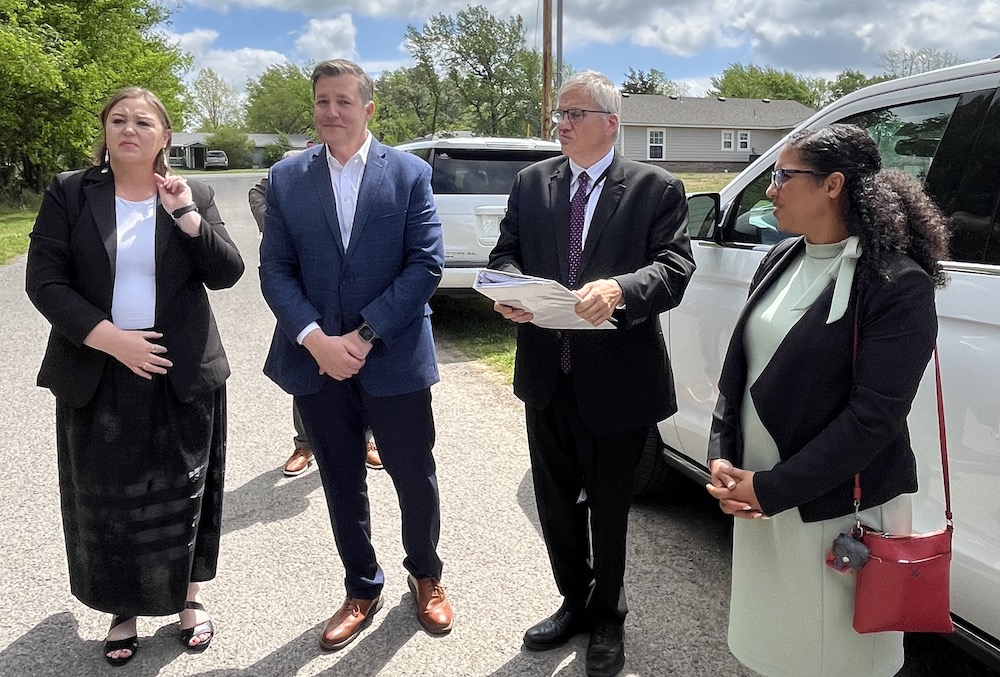
- Details
- By Chez Oxendine
- Real Estate
The Department of Housing and Urban Development has issued a long-awaited final rule for a three decade-old loan guarantee program aimed at facilitating Native American homeownership.
The new rules for the Section 184 Indian Housing Loan Guarantee Program, effective this month, seek to enhance the historically underutilized program by addressing issues like low lender participation and limited access to capital.
The updated regulations should assure lenders while also establishing borrower protections, Richard Monocchio, HUD’s principal deputy assistant secretary for public and Indian housing, told Tribal Business News.
“We haven’t had a final rule for this program for a long time. When you don’t have a final rule, sometimes participants — in this case lenders — are hesitant to get involved,” Monocchio said. “We also really felt strongly that protection should be extended to Native borrowers the same way it’s extended to other borrowers.”
The final rule includes 30 clarifications and updates. For example, it establishes new minimum net worth and quality-control regulations for lenders. The rule also establishes a three-month moratorium on foreclosures through loans guaranteed by the 184 program. Under the new rule, lenders must attempt to modify the loan to keep the borrower in their home, Monocchio said.
Section 184 has guaranteed over $10 billion across 57,000 loans since its inception in 1994. The program helps Natives find loans for rehabilitation, new construction, and other needs despite chronic barriers to credit. That still doesn’t meet the needs of a growing crisis in Indian Country, however. To do that, Section 184 needs more participation, Monocchio said. By providing stability and clarity, the final rule should bring more borrowers and lenders onboard.
“Whenever you have more lenders, you have more competition, you can get better rates. I think any program is looking to do that,” Monocchio said. “[Section 184] is a big part of how Native families become homeowners. We know that’s a way to build wealth in this country. We wanted to make sure that we didn't have a program that was outdated that would have limited lender participation.”
The final rule arrives after 28 tribal consultations over the last 30 years, Monocchio said. Tribal comments ranged from requests for programmatic expansion to concerns that new regulations would unduly burden Native lenders or borrowers. Those consultations were ultimately effective, said National American Indian Housing Council (NAIHC) Executive Director Douglas Marconi, Sr., a member of the Nez Perce Tribe.
“We identified some weaknesses in the rule, and now we’re looking forward to more participation in the process,” Marconi said. “They’ve set some standards for the lenders and to service providers working within the system. They built in some safeguards for the borrowers. Those are important steps.”
The clarifications will help NAIHC in turn provide guidance to its clients, which include tribal housing authorities and individual Native homeowners. With the final rule in place, Marconi said the council’s next step is working with experts on implementing 184 and tracking the program’s impact.
“We’re going to look for what will work from region to region. There’s no cookie-cutter model that fits everyone, of course,” Marconi said. “Some tribes have housing authorities. Some tribes work through the Bureau of Indian Affairs. There’s some uniqueness to each of these regions when it comes to lending and leasing.”
Nancy Bainbridge, executive vice president of tribal and construction lending at Chickasaw Bank, said subsequent guidance on 184 would determine the rule’s effectiveness. HUD plans to provide technical assistance for new and existing lenders under 184 later this year.
For Bainbridge, who has worked extensively on 184 loans, the new rule keeps necessary flexibility while accommodating a range of tribal needs. That flexibility has “always” been a crucial part of 184 loans, but muddled regulations sometimes caused confusion, Bainbridge said.
“There was a lot of interpretation. There was no support for HUD to make some of the decisions they needed to make, but couldn't make,” Bainbridge said. “I think this will help everybody be on the same page.”
As for whether or not the rule will bring in more lenders, that remains to be seen, Bainbridge said. Section 184 loans still have to be manually underwritten, which could ward off bigger banks relying on automated underwriting, for example.
“We know what the regulations say, but I don’t think we know the impact yet,” Bainbridge said. “The guidance will be the actual working plan. Overall, I think this is a great move.”
Federal interest in supporting Native homeowners has trended upward in the last few years, NAIHC’s Marconi said. He pointed to increased funding for Indian Housing Block Grants under the Native American Housing Assistance and Self Determination Act (NAHASDA.) Tribal use of the Low Income Housing Tax Credit (LIHTC) program has also widened housing opportunities.
Clarifying and finalizing 184 is another positive step, Marconi said.
“The trend has gotten better this year. This is the first time NAHASDA has exceeded the billion-dollar mark. We’re actually a number in the fiscal budget. It feels funny to say that,” Marconi said. “We’re heading into discussions about appropriations for next year, and we’re hoping to see at least a small NAHASDA increase again. We’ve got tribal voices ensuring that HUD has listened and Congress is listening. These are good steps toward building wealth in our reservations, and we need more of it.”
Section 184’s codification is the final rule, but not the last step. HUD is still listening, and hopes to continue building support, Monocchio told Tribal Business News.
“We know we have a housing supply problem not only in the country but in Indian territory as well. There's a lot of people that need help, we need to do more,” Monocchio said. “That's something that came through loud and clear. Tribes and their housing authorities want to help every single citizen with the needs they have.”
